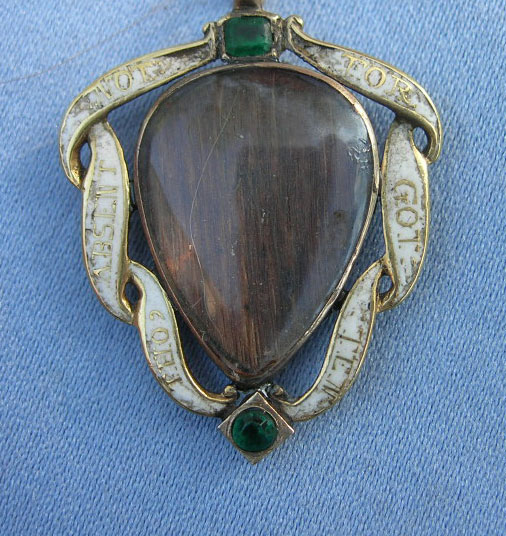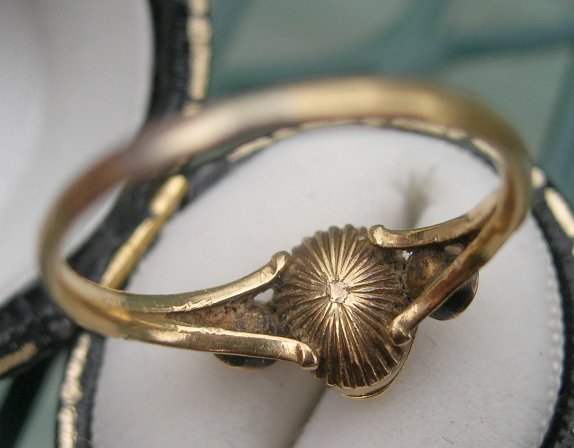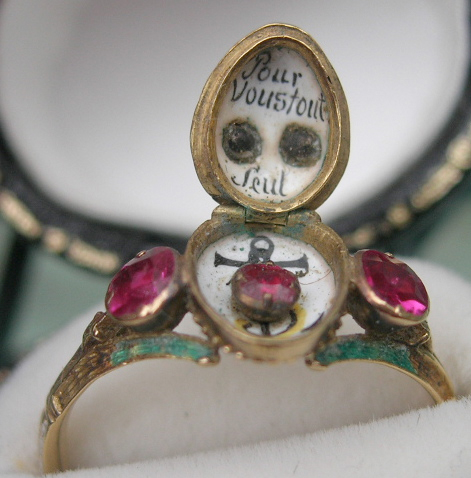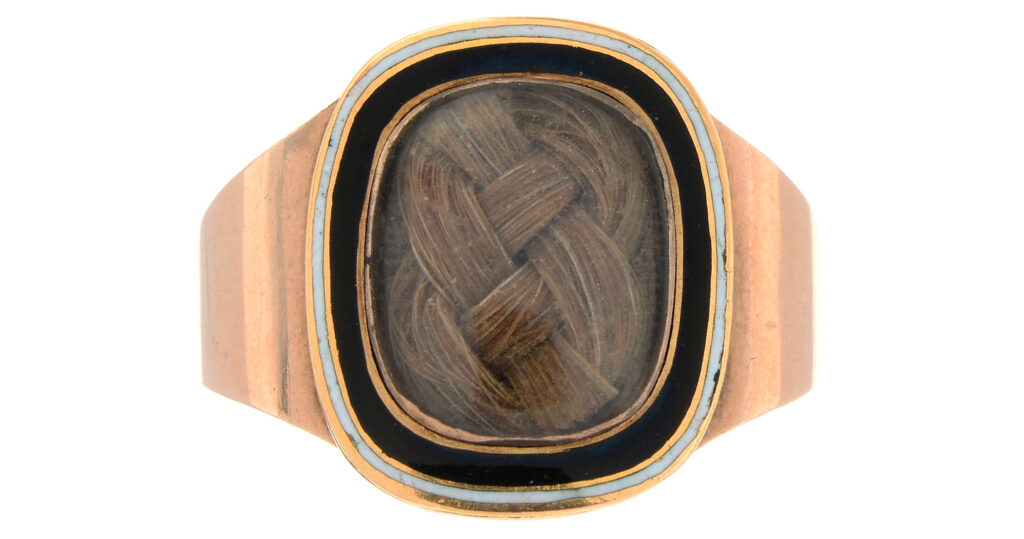French Sentimentality Captured in an 18th Century Ring
“For You All Alone” (“Pour Vous Tout Seule”) is a sentiment that equates not only to the message of love that it states, but also speaks to the singular design of this particular ring. Interestingly, the ring itself is not far removed from its posie/poesy brethren, with the configuration of the sentiment still hidden inside the locket bezel and the message of love being its reason for being. It is the introduction of the enamel carnival mask that creates a new dimension to the ring and anchors it to a certain period in time through this popular motif.
The ring dates from the middle of the 18th century, a time when loving motifs had taken prominence as the singular design motif in jewels. Most popular of these being the heart motif, a loving statement that has coined the term ‘Georgian Heart’ due to its motif and popularity in the 18th century.
Another popular motif were the Giardinetti (little garden) rings were popular as gifts given to important ladies in society, hence a woman may have several. These things were gems (rose diamonds, small coloured stones) set in sprays of flowers, leaves and fruit.
Being a personal statement, the design of a jewel, beyond the written sentiment, was just as popular in its intent. The 18th century’s new focus upon the aesthetic to represent the personal led into the Neoclassical era (c.1765) and was helped through by the Enlightenment and its challenges to traditional interpretations of personal/ecclesiastical relationships. From a socio-economic perspective, the Western world was being opened up through the Americas, spurred by new technologies and industry which could increase communications and travel. Levels of society that were static in their geographic region and anchored to their family/village had access to education in rising industries and create personal finance.
This carnival mask ring shows all the key elements of its 18th century origin. The wear to the enamel on the locket, with the diamond eyes and ruby shoulders, had a much clearer depiction when it was new. The below piece comes from the Rosebery collection:
Note the immediate similarities. The blush to the cheeks and the black enamel mask are almost identical, along with the diamond eyes. Where this ring shows more of its period comes from the reverse of the bezel:
Here, the rosette shape (for more on these, read this article) is a key indicator of the mid-18th century. This shape was particularly in heavy usage from the 1740s-1760s, used across rings and brooches.
Loss to the green enamel on the shoulders would have given this ring almost an element of costume to its visage, making up the motif of a collar for a very decorative piece. As we’ve looked at earlier, the motifs of the time were the popular ones to identify with and share with a loved one. This carnival mask and its connection to the Rosebery piece show the French fascination with the Columbina mask, which is a half-mask style, (alluding to an actress also named Columbina in the Commedia dell’arte), who did not wish to have her beautiful face covered completely. The Commedia dell’arte is a form of allegorical theatre that emerged in Italy in the 16th century, but rose to popularity in France during the 17th century. This theatre is the ‘comedy of improvisation’, where the masks represent a personality/persona type, making it quite powerful as a challenge to socio/economic/political values.
The mask has a dual message. From the personal perspective, it is a message of hidden love (much the same as a posie), with the mask providing a loving anonymity from the ‘beautiful face’ of the wearer. It is a sign of unity, in that the giver wants the wearer to shield her face from all other offers of affection and also for her to keep their love faithfully between them.
Where the ring gets even more interesting is the ruby in the centre of the locket, intersecting the faith/hope/charity symbolism. This seems an awkward design choice and worth scrutiny. One area were a ring like this is going to be eternally popular is that it has all the factors of high-end jewels – the gems provide wealth, the colours give pleasant aesthetics and the message is directly about love. This is why a piece like this is less likely to stand up to the passage of time, as the popularity will make it a jewel to be worn and shown, rather than a mourning piece which may be a personal memory of a loved one and hidden away.













